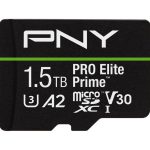- Vee Weir, 29, started out in 2016 with student loans, personal loans, and auto loans.
- She scheduled no-spend weeks and set a strict budget to increase the cash she had for payoff.
- Then, she used the debt avalanche method to tackle more than $32,000 worth of debt.
- This article is part of a series focused on millennial financial empowerment called Master Your Money.
Twenty-nine-year-old Vee Weir started out her adult life like many millennials: in debt.
She started her debt-payoff journey struggling with student loans, personal loans, and auto loan debt. The millennial, who now owns her own digital marketing company in Colorado, started to chip away at her debt in 2016. Now, five years later, she’s paid off more than $32,000 worth of debt.
In her experience, three things helped her reach this major goal faster than anticipated.
1. She scheduled ‘no-spend weeks’
Before starting to tackle her debt, Weir realized she needed to find ways to spend less. She decided to lock up her money to stop her spending.
“I put all of my debit cards and my credit cards in a Mason jar, and I put it in the very back end of my closet. I put all of my money in jail, essentially,” she said.
She wanted to make sure that she didn’t spend for a week to kick off her journey. “I only spent money on my essential items, just to see what it felt like, and how I would deal with being restricted on a budget,” she told Insider.
Without spending for a week, and repeating this tactic throughout her journey, she could put more money toward her debt.
2. She made a budget and stuck to it
To save more, Weir knew that she needed to make a budget and stick to it.
Outside of her no-spend weeks, she knew she had to control how much she was spending and increase the amount of money she had free for debt payoff. “I was trying to retrain myself how to be responsible with money because I had no education on it,” she said.
While it was restrictive at the beginning, it forced her to think about money differently.
“I began to make a budget, live intentionally, and live within my means, which I had never really done,” she said. “When student loans are flowing and you’re getting that excess money, you’re paying for housing and you’re paying for essentials, but you’re also not spending wisely, especially as a younger person.”
Eventually, her budget didn’t feel so strict. “Once you start budgeting and you really get in the flow of things, it’s not restrictive, it actually gives permission to spend money and to treat yourself,” she said.
3. She used the debt avalanche method to tackle her debt
Weir started tackling her debt using simple strategies for prioritizing her payoff. She started out using the debt snowball method, where you focus on paying off smaller debts first.
However, she realized quickly that this wasn’t the method for her. She switched to another method called the debt avalanche, which puts higher-interest debts first, in order to help save money on interest.
“That debt snowball method is really great for people who just dread money or dread paying off debt,” she said. “It’s more of a psychological thing when you get those small wins and you’re motivated, so you want to pay off more debt.”
But, she quickly realized that she’d rather have savings instead of motivation. “Mathematically, I would rather have done the debt avalanche to pay off the debt with the most interest, just because it would have saved me a lot of money in the long run,” she said.
Using this tactic ultimately helped her pay off tens of thousands of dollars in debt and become debt-free.
- Read more:
- A woman who hit a $1 million net worth in her early 30s shares the 3 strategies that helped her reach her goal
- 3 steps a 27-year-old millennial took to build a $250,000 investing portfolio
- A millennial teacher grew her net worth by $30,000 in 2 years by tackling 3 major goals at the same time
- 5 things a 28-year-old learned while saving up for an emergency fund in less than a year
Powered by WPeMatico






